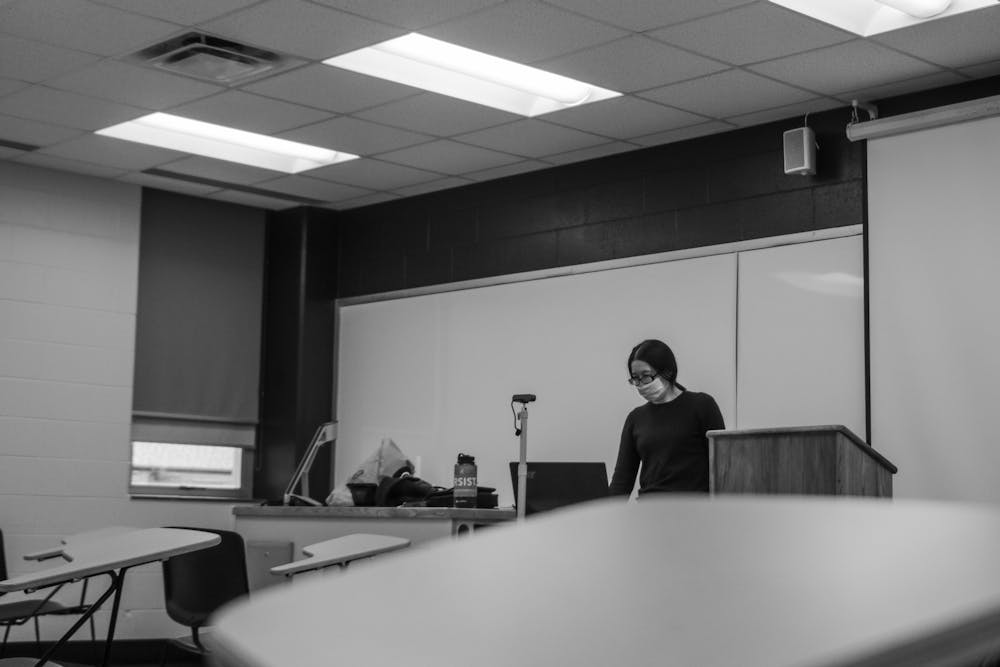BUDGET: University wide budget cuts affect faculty positions

Graduate teaching assistant, Emma Johnson, asks her virtual 'U.S. History Through Michigan Eyes' class questions about government Nov. 17. Educators are forced to teach in nearly empty classrooms due to guidelines in place to limit the spread of COVID-19.
(This photo was taken for the "Learning in Isolation" photo story. Johnson is not quoted in this story)

(Logo by Madison Skop | Lead Designer)
Due to declining enrollment and university-wide budget cuts, Central Michigan University has laid-off many fixed-term faculty members and eliminated several regular and medical faculty positions.
According to the 2020-21 Operating Budget for the current fiscal year, there are a total 695 regular and medical faculty member positions, with only 637 filled. That shows CMU is down 62 fixed-term faculty and 25 regular and medical faculty members from the 2019-20 academic year.
CMU's 2020- 2021 operating budget decreased by 7.3 percent, a difference of more than $30 million from last year. There was a 3.3 percent decrease in 2019-2020 and a 1.9 percent decrease in 2018-2019.
The decrease has caused university wide cuts including the amount of personnel within colleges.
The Union of Teaching Faculty (UTF) Chief Steward Jason Kennedy said some fixed-term faculty have semester-to-semester contracts and were let go rather than laid off.
"The vast majority of (those) 62 members that we're down would fall under layoff," Kennedy said.
About two-thirds, or 65 percent, of the university's budget goes to pay its employees, according to Joe Garrison, executive director of Financial Planning and Budgets.
"It is hard to make cuts and not impact people,” Garrison said.
Faculty Association President Matt Johnson said faculty positions open up when someone leaves CMU, whether it's due to another job opportunity, retirement or termination. Although those positions may be open – with no intention of being immediately filled – the work and course load will be picked up by others in those departments. That can take a toll on the remaining faculty.
"Nobody tells us, 'OK, well, you can offer three fewer sections this year,'" Johnson said. "Sometimes, there isn't that much of an increased workload. Sometimes there really is."
The faculty in the College of Health Professions saw their workload increase by an entire course per semester this year, changing from three to four courses per semester for regular faculty and from four to five for fix-termed faculty.
Joe Garrison, executive director of Financial Planning and Budgets, said academic colleges and departments take registration and course demand into account when finalizing those budgets.
"We'll continue to monitor registration, and look at student demand. We look at how many sections are needed of each course and it makes sure that the appropriate number of sections are staffed with fixed term or regular faculty based on their appointment," Garrison said. "A recurring theme of is that ultimately student demand is what causes the number of faculty that we have the number of sections that we have."
Although they directly affect the job security of faculty members, Kennedy said that students should be more concerned about the budget cuts due to program prioritization and class availability.
"Students should be aware that budget cuts always (are) bad," Kennedy said. "The practical reality of it is that the professors in the classes that you want to take may not be available for you."






